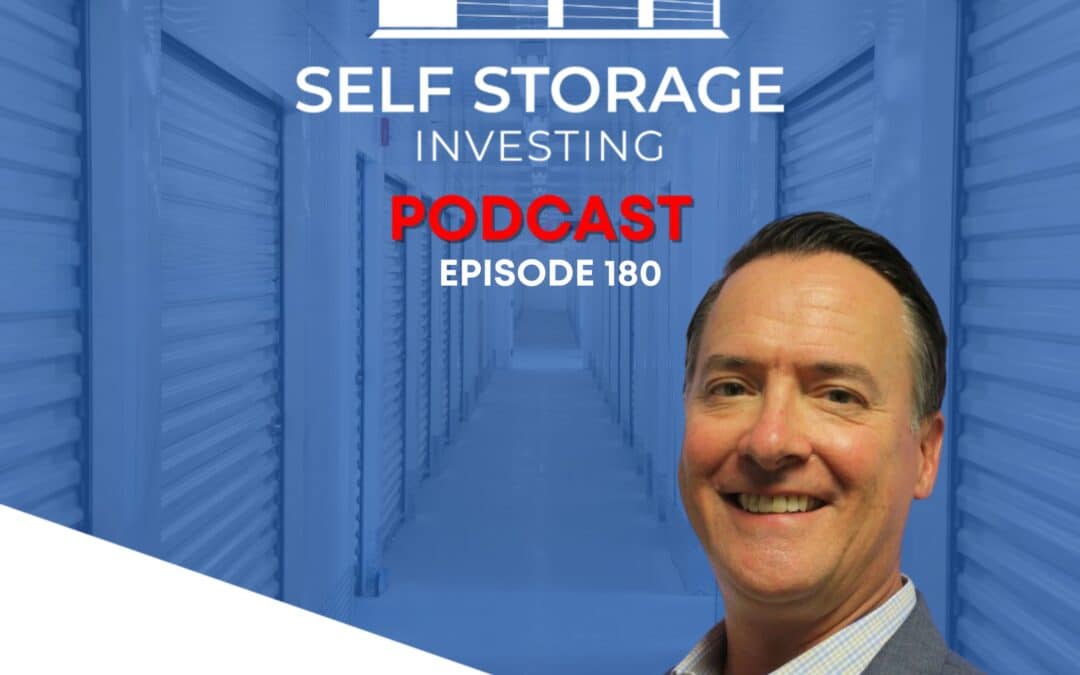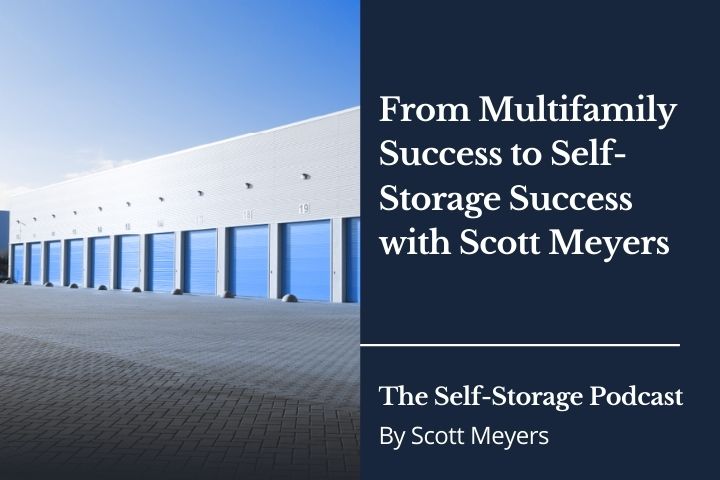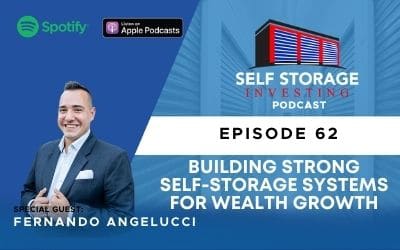Tom Dunkel, Chief Investment Officer at Belrose Storage Group, discusses the increasing demand for boat and RV storage in the US.
He explains that the production of RVs and boats is outpacing the creation of storage spaces, with homeowners’ associations and municipalities often restricting parking in residential areas. Dunkel suggests that this demand, coupled with the low maintenance and high margins of such facilities, makes boat and RV storage an attractive investment.
However, he acknowledges that raising capital for these projects can be challenging due to investor unfamiliarity with the asset class and current economic uncertainties.
Despite these challenges, Dunkel remains optimistic about the future of boat and RV storage, seeing it as a long-term growth opportunity.
WHAT TO LISTEN FOR
13:04 Growing Demand for Boat and RV Storage
15:17 Operational Ease
16:18 Future Growth Prospects
28:14 Challenges in Raising Capital
Leave a positive rating for this podcast with one click
CONNECT WITH Tom Dunkel
Website | X | LinkedIn
CONNECT WITH US
Website | You Tube | Facebook | X | LinkedIn | Instagram
Follow so you never miss a NEW episode! Leave us an honest rating and review on Apple or Spotify.
Episode Transcript
Tom Dunkel (00:00):
They don’t want you parking your RV or your boat in the driveway or in the yard in the brand new neighborhood.
Big Announcer (00:16):
This is the Self-Storage Podcast where we share the knowledge and skills from the industry’s leading investors, developers, and operators to help you launch and grow your Self-Storage business. Your host, Scott Meyers, over the past 18 years has acquired, developed, converted, and syndicated nearly 5 million square feet of Self-Storage nationwide with the help of his incredible team@selfstorageinvesting.com, who has helped thousands of people achieve greatness in Self-Storage.
Scott Meyers (00:52):
Hello everyone, and welcome back to the Self-Storage Podcast. I’m your host at Scott Meyers, and on today’s episode we have about Tom Dunkle with the Belrose Storage Group. Tom, a good friend of mine, also a member of our mastermind, has come through our ranks and has grown an incredible company at an incredible pace within the storage industry. Tom, welcome to the show,
Tom Dunkel (01:10):
Scott, my friend. It’s always great to be with you. Looking forward to our chat today.
Scott Meyers (01:14):
I am as well because we’re together at the Mastermind. We’re together on other occasions, but we don’t have a full 30 minutes to be able to sit down and catch up it seems like ever. That’s right. Now we’re going to open it up to Storage Nation and allow them to hear a little bit about really what you’re doing right now, and not necessarily a pivot, but a big add-on to what you’ve been doing. But before that, you tell your story and your journey a little bit better than I can. So tell us a little bit about the genesis of your company and how you got involved in self storage to begin with.
Tom Dunkel (01:47):
Yeah, sure. Well, as you know Scott, I’m solidly in my fifties now, so I tend to get a little long-winded, so I’ll try to keep
Scott Meyers (01:54):
It and willing to admit it. I think that you’re humble.
Tom Dunkel (01:57):
Exactly. But yeah, I was just talking to somebody earlier, I was like, wow, I guess I graduated business school like 29 years ago. So anyway, it’s been a while. But yeah, so went to business school, did the corporate America thing for several years. I was doing mergers and acquisitions in the aerospace industry, so I got a really solid foundation at that time in just financial modeling projections, putting packages together for lenders and investors, working with private equity firms, working with the lenders and to put these deals together. So it was a fantastic foundation. And back then we were doing deals that were tens of millions. I think one time we did 140 million acquisition, so the dollars were much, much bigger as compared to where we are now, acquiring storage facilities for three, four, 5 million bucks. But anyway, we’ll get to that in a minute. But it gave me a great foundation, worked with some amazing people, Ivy League, ex fighter, pilots, astronauts.
(03:01):
It was just surrounded by those kinds of people, just through kind of osmosis, you’re going to pick up some great stuff. So fast forward from there. I had moved around a little bit, done a bunch of deals. 2006, I got some interesting news from my boss. He said, you’re fired. And so that was kind of the kick in the pants that I needed Scott to actually go out and start my entrepreneurial career, which is something I really wanted to do, but it’s hard to find when’s that right time to do it. I have the cushy corporate job getting the paycheck every other week and stock options and bonuses and this and that, and a young family at home. And so it was always difficult to figure out when was the best time to make that transition then. So that decision was kind of made for me, and so I just decided to go for it.
(03:50):
And of course, this was 2006, not the best time Scott to go out and try to build your real estate empire, but that’s what I tried to do. Learned some hard lessons those first few years as the great recession hit and really kind of changed the world. But I persisted, kept meeting people, going to the real estate networking events, and that’s where I found my business partner, Joe Downs, who you’ve had on the show before as well. So we’ve been together 14 years now as business partners, and we’ve done different things in different asset classes along the way. And our company, US Mortgage Resolution is a distressed mortgage debt company, which has been quite successful over the years, and the success of that business has allowed us to venture off and do some other things. So we’ve tried some hard money lending. We tried some fix and flip stuff.
(04:43):
We failed at Hard Money lending the first time, so we thought we’d try it again, and then we failed again. But eventually, about 2016, 2017, we started hearing about self-storage, and we really started liking what we heard because very steady asset class, whereas the distressed mortgage debt business was very successful and very profitable. It’s also very unpredictable, which makes it hard, especially for an MBA guy like me to do the projections and put the business plan together and have the key performance indicators and all that stuff. So we were looking for a business that we could reliably grow, build a team, build a self-managing business, and eventually kind of build a team to the point where we could step back and kind of ride off into the sunset. But I’m sure we can get into all kinds of juicy stuff about why we love self-storage, but I’ll take a pause there and a breath in case you had any questions to that point.
Scott Meyers (05:42):
Yeah, we love this asset class for so many reasons. It seems like self storage finds us in our real estate career instead of us finding self storage is the way that I think most of the folks that come on this show look at this, and I’d say a little bit similar, but you came into self storage with a little bit of scar tissue, but also with some experience, especially on the higher end. So that also brings with it a little bit of confidence when you come into this, but tell us about your approach to self storage when you said, yeah, not only is this interesting, but I think this is something that I want to do, then how did you approach starting the business? A whole lot of folks in Storage Nation here that haven’t even begun yet, or they’re just now exploring. So talk about those first steps. Let’s go back to the early days
Tom Dunkel (06:28):
For sure. Yeah, of course. Well, the first thing when you’re getting involved in whatever asset class or whatever business is, you got to get yourself educated. So it was in, I think 2017 or 2018 that Joe went to the Self Storage Academy here in Philadelphia, met you, met the team, came back to the office the next day, all excited like, Hey, we got to look more into this. And then I went, ended up going with Joe to another self-storage academy out in Indianapolis. I think that was maybe 2018. And it was there that we jumped into the coaching program and started going out there and banging around trying to find some self-storage deals. And that’s when we realized, hey, we’re missing really important skill sets between the two of us. Joe and I haven’t been business partners for a while. We know what we’re good at, we can put the models together and do the projections and make the business case and raise the money, but we were missing two key things that really came to light through our educational process and then again, through the mastermind was on the front end.
(07:36):
We just couldn’t get any traction finding those off market deals. And everybody knows that in real estate, you make your money when you buy and when you can find those off market deals that are not brokered and widely marketed, that’s when you have a really good chance of getting a good deal. And so we just couldn’t get any traction there. We couldn’t do it, couldn’t do it. So through the mastermind process, through the group there, we found Tim Kane and Tim the opposite problem. He was generating all kinds of off-market leads, but he didn’t know how to analyze ’em. He didn’t know how to put the projections together and do the modeling and raise the capital. So it was just a really natural fit. And so at one of the mastermind events, we sat down and we just sort of formulated how we would work together.
(08:24):
And now Tim’s been part of the partnership now since 2019. And so we’ve formed a great partnership there. But now, Scott, as you know, when you find the deal, you analyze the deal, you take it down, you get the money together, now you got to run the thing. So that was something else. We had no idea really what we were getting ourselves into. So again, through the mastermind community, we were able to meet Catherine East and we brought her and her team in to help us with the transition and the operational aspects. And so once we had the team together, Scott, and we had the education that gave us the confidence to then go out in the world and make actual legitimate offers on properties, because when you’re not confident, when you don’t have the education, you don’t have the network supporting. You go out and what do you do?
(09:17):
You make low ball offers hoping that they aren’t accepted, but if they do get accepted, maybe you’ve built it enough cushions so you can go in there and screw it up and still maybe make a couple bucks. But having the confidence of the team and the education really gave us the ability to go out to market and acquire our first facility in 2020. And now here we are in the middle of 2024, we’ve acquired 16 facilities across eight states for $46 million and about 600,000 square feet of storage. So we’re off to a pretty good start.
Scott Meyers (09:54):
Well, a couple things I wanted to touch on. First of all, once again, you guys have just done an incredible job and so proud of you guys for just taking the foundation that we set and the plans and just running with it. I wish everybody would do that as they come through our academies and go through our mentoring program. So it’s just been great to watch your guys’ meteoric rise. It’s been fantastic. I mean, as an educator, we love that. But you’re right, we see so many folks that come through or even when they come to us or the beginning stages of looking at the industry, they may be looking around traditional sources working with brokers, or they may stumble across the project, but they just don’t have the confidence to put an offer in period, not only a low ball offer, but an offer period, because they think, well, if I’m bound legally and I’ve got earnest money, I don’t know that I can get this thing across the finish line.
(10:47):
I don’t know if a lender will take me seriously. I dunno if I can raise the capital. And so it’s that fear of the unknown that keeps the would-be successful self-storage investors sitting on the bench instead of setting up to the plate. And so I think it’s an interesting piece and a challenge where many people find us. But now fast forward, as you mentioned several years later, you guys did it. You moved forward, grow in a business, and here we find ourselves in not the easiest of times to do business, no matter what asset class you’re in or business in general, we’ve got high cost of capital, we’ve got high cost of our good sold, and our good sold is developing a facility or even acquiring it no matter how you slice it. The industry has gotten a little more difficult, a little more challenging, and deals that used to pencil out because of the cost of capital three years ago, we’ve hit the pause button or they’ve just gone by the wayside.
(11:38):
We just can’t do ’em any longer. But in addition to that, we’ve had in the background within, I don’t even want to call this self storage a niche anymore, but some people would, within our niche is another niche or another avenue, which is a boat and RV storage and contractor storage, and a couple which is seen not only increasing demand, it’s been high demand to begin with, but a huge surge in demand as of covid after covid, because people weren’t traveling, they couldn’t travel, and so they were taking their vacation money and plunking it down in an RV or a boat. And it was interesting, and I do believe it was Joe that we were talking with when he was talking about just the boat and RV piece, although our conversation focused on the contractor piece, the amount of RVs and boats that are being produced, manufactured versus the data that we can find on self storage facilities or the amount of spaces that people are adding on to their developing self storage facilities. I mean, it’s just a fraction. It’s just a fraction of the amount compared to the units that are being produced in terms of a boats and RVs out there. So I know you guys are going full bore into adding that into what you’re already doing and made some key hires and partnerships within your organization to do so. Tell us a little bit about seeing the light and the opportunities there and why you’re deciding to focus in that realm.
Tom Dunkel (13:04):
Sure. Yeah, so I mean, Scott, it’s actually worse than what you said, which is that the production of RVs is several hundred thousand, 400,000 depending on what data you look at. But there was only 20,000 RV parking spots being built every year according to the best data, but it’s even worse than that because all these new developments that are popping up, our population is increasing. There’s all these new developments being built. Well, most of ’em are under homeowners associations, HOAs, and what do HOAs not want? They don’t want you parking your RV or your boat in the driveway or in the yard in the brand new neighborhood. So these people are being forced to find places to park their recreational vehicles. And so what we’re finding is people are being forced to drive 30, 40 minutes an hour to get to a storage facility where there’s space for them to park their vehicle.
(14:12):
And it’s just because, again, it’s not only HOAs, but municipalities are not really big fans of just having a parking lot full of RVs and boats. So the supply is being suppressed by municipalities and HOAs, but the demand is still going up. So these folks are needing to find places to park these RVs and boats and this just like a lot of other things, Scott, we stumbled almost by accident into our notes business. We stumbled by accident into self storage, and now we’re stumbling by accident contractor storage as you talked with Joe in a previous episode. And then boat and RV because we’re acquiring facilities that are traditional storage, but then they also have some parking spaces. And we’re seeing that the parking spaces are in very high demand and how much management is really needed to handle a parking space. I mean, self storage by itself is easy enough as it is, right?
(15:17):
It’s a metal box with a concrete floor and a roll-up door, so there’s not a lot of maintenance to go there. And the facility we just bought in out in Minneapolis, it’s literally a gravel parking lot with a fence and a gate and some security cameras and a security lighting, and there’s just not a whole lot to talk about in terms of the operational aspects of that. So it’s a very high margin, high cash flow, high return kind of asset class again that we just sort of stumbled into. But there’s just a lot of exciting demographic trends pushing us in that direction. And the economics just back it up, and we see a very long, long runway here where there’s going to continue to be opportunities in this space, super highly fragmented as well. So it’s got a lot of great things, a lot of great things to check off when you’re looking for great investment opportunities.
Scott Meyers (16:18):
In the beginning of my storage career, we would use boat and RV storage, basically kind of like the way self storage was used to begin with. Anyways, it was as a land bank, people would buy a plot of ground on the outskirts of town and the path of progress, and they’d throw some buildings on it just to generate a little bit of revenue, cover the taxes until the growth comes, and then they’d knock it down and put up a multifamily or retail or something else until we found that. So storage was the best asset class and the highest and best use of that piece of dirt going forward. Then when we get into self storage, if we buy five acres and we’re going to develop it, well, we’re going to do it 1, 2, 3 buildings at a time until we build it out. But in the meantime, yeah, we’ll gravel it and then maybe even put some pads down and then rent out that space to boat an rv.
(17:03):
And at that time, I’m going back to when I first started in the industry 20 years ago now, we were in the Midwest, we’re 35, 40 bucks for an uncovered space, and we weren’t putting up canopies, we weren’t building the buildings for those. And so that’s all it was was just to generate a little bit of revenue, but now with the demand from what you just said and the numbers that we were seeing, and with the increase in cost of what these people are spending on not only boats, but especially these RVs and the incredible and the size of the investment of these RVs, now we’re talking upwards of a million dollars for what not too many years ago, was really around 200,000 to $250,000 has gone through the roof. So people aren’t just looking for an open space, especially in the south where the sun beats it up or in the north with the snow and everything else.
(17:51):
So they’re looking for canopies, they’re looking for someplace to put fully enclosed to store these vehicles. And now the rent per square foot we’re getting in many cases is even higher than under roof for regular storage. And so the model for our boat and RV storage within an existing facility are going out and buying a piece of dirt to gravel and put a fence around has changed dramatically in just a few short years as well. Are you looking for storage facilities with additional land? Are you looking for land to develop these? Are you looking for an existing boat in RV lot to expand on or all of the above? Is there a specific focus in what you’re doing in order to find or develop these facilities, or is it just as you’re searching, evaluate what comes across the desk?
Tom Dunkel (18:38):
Yeah, it is kind of all the above, Scott. I mean, we’re an opportunistic, nimble, agile organization, so we’re just looking for any way we can to make a good risk adjusted return for our investors. So I’ll tell you an interesting story. We acquired a facility down in Macon, North Carolina, which is right near a lake and it’s a little bit rural. So we figured, hey, this is going to be, and it came with some extra land. We said, Hey, this is traditional storage. It’s a pretty new facility, but it’s coming with this extra land. Let’s throw down just some line spots and we’ll put some boats and some RVs in there. We’ll be off to the races. Well, guess what? As we dug in more and more and did our analysis, we realized in looking at the competition in that particular market, and because it was somewhat rural in this particular case, it did not make sense to add boat and RV parking there because there were a couple other competitors in the area that were only charging, like you were saying 20 years ago, type prices, 40 bucks, 50 bucks.
(19:48):
And so as we looked at the opportunity to add boat and RV parking versus traditional storage, it was traditional storage all the way just because of the way the numbers rolled out. So it’s not like we’re just randomly out there picking up whatever land we can get and just if you build it, they will come kind of mentality. That’s not how we operate. We’re very diligent about analyzing markets, analyzing supply and demand. And in that particular case, it just didn’t make sense. Now, compare that to other locations where we’re looking right now. In Georgia for example, there’s a ton of demand for self-storage and for boat and RV parking, and our analysis is showing us that those rates will support additional boat and RV parking spaces. So down there, yeah, we’re going for it with the boat and RV parking. And as far as buying raw land and building that out, it’s definitely something we’re starting to inch towards Scott. But as I mentioned earlier, municipalities aren’t really handing out permits to build these kinds of things because they’re not generating a lot of tax revenue for the municipality. They’re not really super pretty to look at. So municipalities are tending to shy away from allowing those sorts of things, at least anywhere in a metro or a secondary area. You might have to go tertiary or rural to get that kind of approval. So again, we’re just being very, very diligent, very selective about where we are buying, where we’re expanding, where we’re looking to develop.
Scott Meyers (21:31):
And so that does bring some opportunity, at least that we found in terms, as you just mentioned, people are having to go on the outskirts of the city from where they live, driving 20, 30, 40 minutes an hour to find a space because it is very competitive in many areas. And because of that, and also due to the fact that a good pro storage yard, a good boat and RV storage yard isn’t your traditional four and five acres traditional storage. It is 10 acres, it’s 12 acres because you have to, they’re bigger vehicles and you have to have larger drive aisles and turning radiuses that you have to account for. And so it’s tough, first of all to find 10 to 12 acres anywhere in town that, as you mentioned, the city doesn’t really like those types of storage facilities being built. They’d rather see apartments or anything else go up.
(22:21):
So we’re kind of forced to go out and search a little further out to find a large track of land with that provides obviously challenges, but also what we found is that we just built one and completed it in Colorado, and we found that the further we get outside of the city that we are in those tertiary markets, we’re dealing with a different town and a different mentality where in many cases, if there isn’t a lot of growth out there yet, they’re looking for tax base increasing their tax base. And so they are a little more lenient and a little more liberal with their zoning laws and also requirements in terms of architecture and what’s involved in this and the project. And so I think there are opportunities out there. It’s just always like everything. It’s that balance. How far out do you have to go before it’s too far out of your metro area where you attract people, but the dirt is inexpensive and there is enough demand still willing to come out there. So do you have a formula? What are you finding that works in terms of cost per acre and rental rates and proximity? Do you have a sweet spot? Are you understanding more of what that looks like now?
Tom Dunkel (23:30):
So Scott, it’s really, as far as development goes, it’s really a case by case basis because it’s just kind of the wild, wild west out there right now. There’s not a lot of feasibility. There’s no feasibility studies that can be done on this type of asset. And so we’re just doing our best to do our supply and demand analysis and get the quotes from the contractors as to how much the build is going to cost, and then we’re just kind of penciling it out from there. It’s definitely no specific science at this time.
Scott Meyers (24:02):
Well, darn time. I was hoping you were going to give me a magic bullet because that’s what we found. It seems like in this realm, we’re building the plane as we take off because it is, we still don’t have in the industry that much historical data to go on. And so those of us that are doing it, we are building the database, I guess, for everybody else, but Well, that’s good news, Tom. Now we didn’t give anything up to your competition. So is there a ratio now? Are you looking at 50% of your business or what you’re focusing on is on boat and rv, larger contractor storage versus traditional storage, or is it your marketing for all things storage and evaluating what comes across the desk?
Tom Dunkel (24:42):
Yeah, so the way we look at it, Scott, is we’re still big fans of traditional storage. We’re still acquiring traditional storage. We see a lot of runway there. And again, with our due diligence, looking at markets, looking at the specific facilities, we’re being very, very diligent, very focused on what we need to do there. We see the contractor storage and the boat and RV storage as more of a longer term kind of play. So what are we going to look like five years from now? It’s kind of hard to say because the development is so challenging as we’ve been discussing on both the contractor side of things, the contractor pro storage side of things, and the boin RV side of things. But if I had to guess, I would say yeah, we will probably be in five years, probably 50%, I would say a in 10 years are probably going to be primarily pro storage and with some boat and RV and maybe some traditional storage still. But I think over that time, we’re going to kind of morph into more of the storage for the contractors, some boat and rv, and then probably less of the traditional storage. If I had to guess.
Scott Meyers (26:02):
Well, your growth, our growth has been fueled by bringing private equity in doing a syndications and or funds to be able to bring equity in to fuel that growth. And we’ve been doing this for a number of years, maybe 10 or 12 years before, and always, well, not always, in many cases, we’re adding boat and RV storage to the facility afterwards or it already had it in place. And looking at the historical performance of the facilities to draw our projections on and our equity partners, our investors, our limited partners, they were used to just seeing that model. And we’ve had a lot of success with that as well. And then it was like three years ago when we brought our first true nothing but boat and arby storage facility to our limited partners, and this was an established facility and in a very established town in Florida seeing a lot of growth.
(26:51):
And so we’re sharing our numbers, which by all facts and all statistics looked stronger than our existing storage facility showing the demand and just what you mentioned, the HOAs that they had just come up with something different within this town of virtually no more boats, RVs in the neighborhoods and anywhere else. I mean, all it did was just point to the need for this. And the facility had been running strong, staying full with rental increases. And our database of equity partners, the folks that are partnered with us, it was really difficult to get them to come alongside of us and invest in this. And so our second project that we did was the development one, same thing. And even though we’re in a little more difficult environment right now anyways, in investing environment, we’re finding that even with our strong track record and all the stats and the demand that we’re seeing out there, that seems to be a little bit different. So my question is, from a private equity standpoint, your database hasn’t been as tenured or with you as long as mine has, and so there may not fallen into the same habits, but has it been more of a challenge to get people to invest in these projects, or have you been successful in just showing them that, Hey, this area of storage is on fire right now and you need to get on board? What are you finding in the marketplace as you’re raising capital for these projects?
Tom Dunkel (28:14):
Yeah, yeah, great question. So for a traditional straightforward value add, self-storage deal, right? Traditional drive up storage units, we got our database kind of in a groove where within a week or two of launching an offering, we would have 60, 70, maybe 75% of the money raised in that short period of time. So we kind of had a big runup, and then it sort of plateaued for a little while, and then we got scrappy, and then we got the last piece and we were able to close. So that was our experience for our first 13, 14 acquisitions. And then now we’re in this post hyperinflation world and everyone’s a little more cautious. So I think it’s a combination of maybe that and kind of a different flavor asset class where we’ve experienced the same thing, Scott, where we were initially raising 60, 70, 70 5% right out of the gates.
(29:20):
Now it’s like we’re kind of getting crickets early on, which isn’t a great feeling. And so we’re having to go to our scrappy one-on-one phone calls and emails and text messages, and hey, just a lot of follow-up, follow-up, follow-up, really hitting the people from the webinar and then just wherever we can turn over a rock to try to find an investor. So yeah, it has changed our capital raising dynamics. And even before we went out with that initial capital raise, Scott for boat and rv, we through a series of emails and blogs and stuff, we had tried to get out in front of it and educate and nurture our investors so that when, because we knew this deal was coming, so when the deal did come out that they would already be up to speed and already know the stats and et cetera. But despite our best efforts, it didn’t really work that way.
(30:30):
And now thankfully, we did get that first one closed. That was the first one that was just boat and RV up outside Minneapolis. So we were able to get that closed, but it was a little different experience than our traditional storage. And some of the feedback we got, probably the most, probably the most impactful feedback we got is, Hey, it’s a gravel parking lot with fence and gates and stuff. There’s not a lot of depreciation there, and they’re right, there’s not as much of a depreciation expense there, which everyone out there knows, I hope they know that that’s a non-cash expense that helps to lower your tax bill at the end of the year. And so that’s a big reason why a lot of our accredited high net worth investors, why they invest in commercial real estate is because they’re wanting that depreciation expense to lower their tax bill, and they’re just not getting that same bang in a boat and RV deal.
(31:40):
There’s just not that many buildings there. There’s nothing to depreciate. So we tried to educate and nurture, assure them a little bit more just like we were talking about a minute ago, just about the huge amount of demand for these spots and how we can push rates. And it is going to be highly cash flowing because the operating expenses are really pretty darn low. And so that gives us the ability to pay perhaps a higher preferred return and a higher overall return. But still, it’s been an education process on both sides for the investors and for us. And we’re still out there educating. And we have another deal actually out right now that we’re running into the same kind of thing where it’s not popping out of the gate, it usually did. It’s going to be a little bit more of a nurturing, handholding, scrappy kind of capital raising process.
Scott Meyers (32:39):
And that’s what we’re finding as well. And I believe that there are a number of folks that are slowing down a little bit in terms of their investing activities in terms of our limited partners or equity partners coming alongside of us. There is an election coming up, and that usually causes a pause. This will be, I don’t know how many elections I’ve been through as I’ve been investing in raising private equity, but lenders tend to slow down a little bit, which makes it difficult for us. They’re pausing to wait to see what type of monetary policy environment that they may be facing before they start entering into any long-term loans with us and our equity partners are following suit. And so it does make it a little bit more challenging, I think for those of us, meaning you and I, we’ve got a strong solid track records behind us.
(33:25):
We’ve got a history of performance, and that puts us ahead of many folks. We’ve been through several recessions. We’ve never lost a dime of our investors equity and our internal rate of returns to our investors, meaning for the both of us have been well ahead of the pack, not only in terms of storage, but also in commercial real estate in general. And so that’s helpful, but at the end of the day, we still, there’s just that fear in the market out there. And so we’re leaning on that more. That is the drum that we’re beating is we’ve got a solid track record. Our returns are higher, not only historically, but we’re offering on this project, and we can afford to do so because we get good strong projects and we’re vertically integrated. We have our management in place, we have all these things in place.
(34:07):
And I think right now, the name of the game, it’s just a comfort level. People need to have a comfort level because there’s a whole lot of folks out there that can grab one project, their first project and throw a big IRR projection on it. But if they’ve never performed, I think the days that people taking risks back in 2021, I think that that’s over. So now our limited partners are digging in and they’re looking for that experience. But outside of all that, knowing what we’re heading into within the election and people just kind of sitting back, any other tips, tricks, strategies, or anything else that you’re trying or you’re looking to deploy as we head into the balance of this year to make sure that the investors continue to keep investing alongside of you?
Tom Dunkel (34:47):
Yeah. Yeah, I think you’re spot on, Scott. I think it boils down to the experience of the team and just educating and nurturing our investors to know like, Hey, we’re in this short term, funky time right now, election year just coming out of this hyperinflation, things seem to be mellowing out a little bit, but we’re going to be holding this asset for 3, 4, 5 years. So let’s take a little bit longer view. And by the way, if you look at history and the history of cycles and real estate, arguably, we’re definitely in the down part of the cycle. And so if we can just battle our way through and grind our way through these next couple of years, we’re going to come out the other side looking really, really good. And so we’re just trying to encourage our investors to stay patient. But is when blood is in the streets, when Warren Buffet says blood is in the streets, that’s when you want to jump in paraphrasing course.
(35:46):
But that’s kind of how we’re talking to our investors and we’re talking to ’em too about capital preservation and inflation. So we’re talking to our investors about, Hey, don’t stick your cash in the mattress because in this kind of inflationary environment, you are losing every single day because you’re losing that buying power. So you can’t sit on the sidelines, you can’t afford to, you’ve got to get into a good asset class that’s going to be a preservation kind of play. So you can put your capital in a real estate kind of opportunity that’s going to have cashflow, it’s going to have some tax benefits, and then we kind of put growth at the end of the discussion. But really we’re encourage our investors to stick with us in commercial real estate because it’s a capital preservation kind of play. And just to take that longer view, and it seems to be resonating, seems to take a little bit to sink in because it is a challenging time and it’s a confusing time.
(36:48):
So as you like to say, confuse mind says no, and we’re experiencing that. And so we’re trying to coach ’em through that and let ’em know that we’re working every day to make sure that the things that we can control, we’re controlling, we can’t control the president, we can’t control interest rates, we can’t control inflation, but we can control our everyday running of our facilities, tracking the key performance indicators, the occupancies, the delinquencies, the NOI and the tenant protection program, all of those kinds of things we can control. And so that’s where we’re focusing on our energy, Scott, is because what we can control, we are not going to waste our time worrying about things we can’t control. So we’re just going to do the best we can with that, and I’m sure we’ll come out fine on the other side,
Scott Meyers (37:41):
Spot on with that message. And that’s the exact same thing that we’re telling our investment partners as well. And that is if you’re sticking your money in a mattress or even in a CD or a money market fund at four or 5%, if you’re not beating inflation, then you’re going backwards and inflation still isn’t under control. Plus the fact that you’re investing in commercial real estate, you’re getting that depreciation, and so putting it into something you got to get off the sidelines. Otherwise, once again, you are going backwards. And the fact that, as you mentioned, Tom, if we’re underwriting our facilities right now in this high cost of capital and operating expense environment, you’re right. When things do turn, we don’t know that the cost of everything is going to go down, but we know that our cost of capital is going to go down.
(38:23):
And so when we refinance and or sell at a lower interest rate and a lower cap rate, we’re going to be better off because we’ve stress tested these projects to begin with and put a nice buffer in place just by the fact that we’re in the environment that we’re in right now. So if it pencils out right now and the underwriting looks good, then it’s only going to get better as long as we mine the store and make sure that we hit our marks in terms of creating the value. So Tom, with that, we’re coming up to the end of our time here. And first of all, I want to thank you once again for taking time out. I know it’s a busy time for all of us. Looking forward to being back in the same room with you again in San Diego. But in the meantime, how to follow up a little bit more. How do people get in touch with you to learn a little bit more about what you do and to catch up with the incredible rise of Bell Rose and how they may be able to even invest with you?
Tom Dunkel (39:11):
Sure, Scott. Well, it’s always great to be with you, my friend. I’m Tom Dunkle. I’m the Chief Investment Officer here at Bell Rose Storage Group. You can find us at bell rose storage group.com. Or if you Google me, Tom Dunkle, you can find me all over social media and you can find your way to our website, which has all kinds of great information, including some investor resources for free on there. I invite you to visit there and download those free resources, hopefully will help you in your passive investing journey. But yeah, this has been great, Scott. Always pleasure.
Scott Meyers (39:47):
Well, Tom, your business partner Joe, is I appreciate when I’m in the same room with him because he usually has a book for me as a gift, and I just finished the two that he has given me recently. So what’s sitting on the corner of your desk or on your bookshelf right now that you’re diving into?
Tom Dunkel (40:03):
Sure. Yeah. Well, this was a recommendation from Joe as well. It’s called The End of the World is just the beginning, and it’s a book, the author’s name’s escaping me right now, but it’s a book by a guy who’s a geopolitical expert or something. And he’s just talking about how we’ve been through this whole season of massive global expansion and interconnectedness and how that’s all coming to an end and we’re actually going to be coming less of a global economy, and he’s going into what’s going to be the impact of that. And the other interesting thing is he talks about how just the physical geography of different countries is giving them an advantage. And it just so happens here in the great United States of America, we are uniquely positioned. We have oceans on both sides of our country. We span north to south. If you look at the whole North American continent, we are from the Arctic down to the equator, and it gives us just so much more leverage and capability over a lot of other countries that he’s basically positing that the United States is going to be where it’s at. If I were to extrapolate that, Scott, it would tell me that money is going to be flowing into our country, which is going to keep our interest rates low, I would hope. Anyway, that’s just me hypothesizing, but it’s also going to, I think, keep people, and who knows, again, I’m just kind of guessing, but I think it might keep people vacationing and spending more time in the US as opposed to going abroad, which I think supports our RV and vote storage business. So anyway, it’s always got to come back to that, right, Scott?
Scott Meyers (41:56):
Yes, it does.
Tom Dunkel (41:58):
That’s right.
Scott Meyers (42:01):
Yeah. Well, of course it does. Of course it does. The trends all lead to self-storage, right? So second time I’ve heard the recommendation of that book, and so now I will write that down and I will get that as well. And it’s interesting because we are seeing that, we’ve seen that there are struggles throughout Europe and Asia, especially from a manufacturing standpoint. And so we’ve seen within the past year and a half to two years now, a massive amount of reshoring. And for lots of reasons, energy sources primarily in other parts of the world are struggling. And so we’re seeing the manufacturers coming back to the US And also just this morning, literally I heard another report about how the United States is becoming even more popular for high net worth individuals moving here, whereas in the past they’ve been moving out and going other places for tax shelters and for a better tax environment and income environment, and now we’re seeing that they’re poised to and are coming back here to the us and so we’re going to benefit from that, which only means good things for us as passive or for us as syndicators who are looking to attract more passive investors as well.
(43:07):
So I too am bullish on the great LUSA as well. So Tom, thanks so much again, so much for your time. I appreciate it. Again, looking forward to being Becca with you very soon. And folks, we will leave all of Tom’s information in the show notes down at the bottom along with the transcript of this. And so thanks for spending time with us as well, storage Nation. We will see you on the next one. Take care.
Tom Dunkel (43:31):
Absolutely.
Big Announcer (43:37):
Hey gang, wait three things before you leave. First, don’t forget to follow the Self-Storage Podcast and turn on your notification so you never miss another episode. And while you’re there, please leave us a five star review if you like the show. Second, be sure to share your favorite episodes and more via Instagram, and don’t forget to tag us. And lastly, head to the links in the show description and hit follow on Twitter and Facebook to get a front row seat as we grow and scale our business and bring you along with us.
















